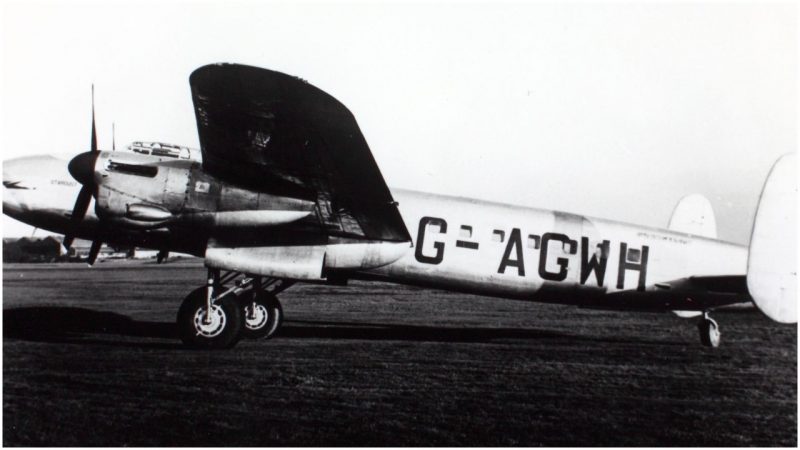The story of the mysterious disappearance of Star Dust, the Avro Lancastrian aircraft with 11 people on board, is similar to any other aviation disaster you’ve heard so far.
As you may have already assumed, the plane veered off course and mysteriously vanished. More or less that is what happened on August 2, 1947, during a flight from Buenos Aires to Santiago, Chile, when Star Dust crashed into Mount Tupungato in the Andes Mountains of western Argentina.
It took more than 50 years before pieces of the puzzle gradually began to come together after climbers accidentally discovered remains of Star Dust’s passengers and crew high in the Andes Mountains.
You can only imagine what kind of stories and rumors popped up during the long 50 years after the plane’s disappearance. From escaping Nazis to stolen gold and abduction by aliens, various mysteries surrounded this particular plane crash and the strange details about some of Star Dust’s passengers just added more fuel to the flames. Like characters straight out of an Agatha Christie novel, the passengers included a Palestinian businessman who allegedly had a diamond stitched into his jacket; a British diplomatic courier who reportedly carried a suitcase full of diplomatic secrets; and a German woman who, according to most sources, had the ashes of her dead husband with her.
Star Dust’s crew consisted of experienced ex-bomber pilots, all of whom participated in a number of combat missions during World War II, but their combat experience was worth nothing once they found themselves up high in the clouds with zero visibility. The crew most likely believed that they had already avoided the mountain tops of the Andes and started their descent much earlier than they were supposed to, which eventually resulted in a disaster.

In January 2000, after the climbers stumbled upon the remains and an investigation was conducted, it was proven that the accident was in fact caused by weather-related factors. However, one mystery still remains. The final message sent by Star Dust’s radio operator in Morse code and received by the radio operator in Santiago stated their ETA (estimated time of arrival) as 5:45 pm and strangely enough it also included the word STENDEC. Believing that the Star Dust’s radio operator made some kind of mistake, the Chilean Air Force ground controller requested clarification and received the same message again and then once more. After that, no contact was made again.
According to the official 1947 report “the 17.41 signal was received by Santiago only 4 minutes before the ETA. The Chilean radio operator at Santiago states that the reception of the signal was loud and clear but that it was given out very fast. Not understanding the word “STENDEC” he queried it and had the same word repeated by the aircraft twice in succession. A solution to the word “STENDEC” has not been found. From this time on nothing further was heard from the aircraft and no contact was made with the control tower at Santiago. All further calls were unanswered.”
It’s been over 70 years since Star Dust disappeared in the Andes Mountains and experts managed to provide answers to all the mysterious questions surrounding its disappearance, but one particular question remains largely unanswered: What is the meaning of Star Dust’s final Morse code transmission, STENDEC?
The odd word is included in The Oxford Dictionary of Phrase and Fable, but that does not help much in its demystification: “Mysterious word in the final transmission from the lost plane Star Dust (see star); its meaning has never been resolved.”
Much has been said during the past 70 years, but the word still remained a source of great mystery. Many people gave their personal views on the subject and tried to guess what the experienced radio operator was trying to say by sending the same unknown word three times in a row.
As you might have already noticed, the letters are an anagram of DESCENT but don’t get too excited, as thousands of other curious guessers from all over the world thought of the same thing.
An episode about the mysterious disappearance of Star Dust and the final message of its crew was created by the BBC television series Horizon and sparked an international debate back in 2000. The creators of the episode received a great number of messages from people who tried to explain the meaning of the word.
The most creative suggestions included one, according to which, the crew may have been suffering from hypoxia (lack of sufficient oxygen in the blood and tissues). When a pilot inhales air at high altitudes the drop in atmospheric pressure makes it difficult for the vital gas to reach the bloodstream, which may affect the function of the brain and can eventually make a pilot confused and in some cases even incapable of flying. This claim suggests that the radio operator might have suffered from hypoxia which might have been the reason why he made a mistake and sent an unknown word. Others suggested that the radio operator was trying to say Star Dust but instead he sent STENDEC. But repeating the unintelligible word twice more seems quite unusual.
There were so many proposed solutions that the creators of the episode were unable to respond to every message they received. However, none of the suggestions made sense and the mystery persisted to date. Although no one can say for certain what STENDEC means, it is nowadays thought by some that the word was an acronym for: “Severe Turbulence Encountered, Now Descending, Emergency Crash-landing,” a Morse code acronym used by World War II pilots.
